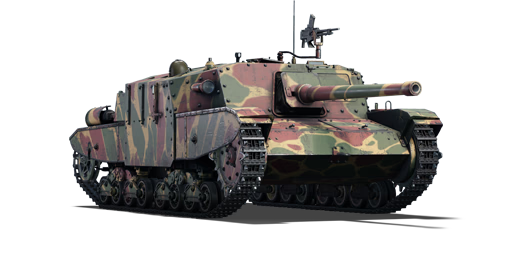

Ground Vehicles
75/46 M43
III
Rank
AB
4.7
RB
4.7
SB
4.7
Battle rating
Italy
Research country
Tank destroyer
Main role
40,000

Research
135,000

Purchase

Kingdom of Italy
Operator
General information
Survivability and armour
Armour
front / side / back
Hull
50 / 40 / 25 mm
Turret
100 / 70 / 45 mm
Visibility
62 %
Crew
3 persons
Support systems
Mobility
Max speed
Forward
3842 km/h
Backward
34 km/h
Power-to-weight ratio
11.810.420.616.8 hp/t
Engine power
185164324263 hp
Weight
15.7 t
Optics
Gunner
Commander
Driver
Optics zoom
1.9x–3.5x
—
—
Armaments
75 mm OTO 75/43 mod.40 cannon
Ammunition
42 rounds
Reload
basic crew → aces
7.6 → 5.9 s
Vertical guidance
-10 / 16°
Horizontal guidance
-18 / 18°
Turret Rotation Speed
basic crew → aces
Horizontal
9.88.317.112.3 → 1411.924.417.6 °/s
Vertical
2.82.28.55.5 → 43.212.27.8 °/s
| Ammunition | Type | Armor penetration (mm) at a distance: | |||||
|---|---|---|---|---|---|---|---|
| 10 m | 100 m | 500 m | 1000 m | 1500 m | 2000 m | ||
| APCBC | 151 | 148 | 135 | 121 | 108 | 96 | |
| HE | 10 | 10 | 10 | 10 | 10 | 10 | |
8 mm Breda Mod. 38 machine gun
Ammunition
504 rounds
Belt capacity
24 rounds
Reload
basic crew → aces
10.4 → 8 s
Fire rate
600 shots/min
Vertical guidance
-10 / 75°
Horizontal guidance
-90 / 90°
Turret Rotation Speed
basic crew → aces
Horizontal
6353.6109.779.3 → 9076.5156.7113.2 °/s
Vertical
6350.4192.1123 → 9072274.5175.7 °/s
| Belt | Belt filling | Armor penetration (mm) at a distance: | |||||
|---|---|---|---|---|---|---|---|
| 10 m | 100 m | 500 m | 1000 m | 1500 m | 2000 m | ||
| API-T/AP/I | 13 | 12 | 7 | 3 | 2 | 0 | |
Economy
Repair cost
Basic → Reference
AB
1,733 → 2,249 

RB
2,043 → 2,652 

SB
2,673 → 3,470 

Crew training
39,000 

Experts
135,000 

Aces
550 

Research Aces
390,000 

Reward multiplier
AB / RB / SB
100 / 150 / 190 % 

154 % 

Total cost of modifications
34,500 

67,500 

Talisman cost
1,300 

Research order:
Mobility | |
|---|---|
Protection |
|---|
Firepower | |
|---|---|
Rating by players
You must play more than 3 battles for the last week and more than 10 battles in a vehicle to rate it.
Like:
25
Armor protection:
Not enough ratings
Survivability:
Not enough ratings
Mobility:
Not enough ratings
Armament:
Not enough ratings
Balance:
Not enough ratings
Tips & Tricks
This space is currently empty
Do you know any interesting vehicle features?
Loading...
No articles about this vehicle yet
Become the first author and get rewards!
Write a guide, tell about interesting historical facts, make a tutorial or simply an interesting post.
No more content